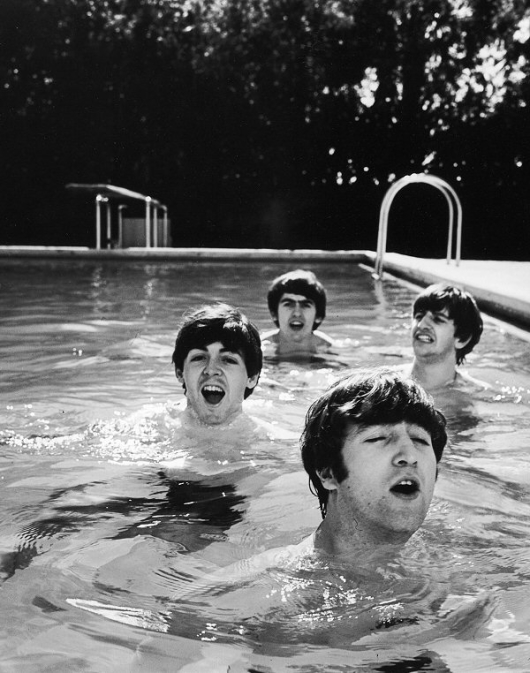
Afterimage Gallery has held two shows of the superb photojournalism of notable Life magazine photographer John Loengard. He was born in New York City in 1934 and died in 2020. He first shot an assignment for Life in 1956 while studying at Harvard College. He joined Life’s staff in 1961 and in 1978 was instrumental in its re-birth as a monthly, serving as picture editor until 1987. His assignments from Life were very diverse, covering such subjects as Georgia O’Keeffe, The Beatles, T.S. Elliott and many other personalities. He also produced photographic essays on the Shakers and the Vanishing Cowboy and authored a number of award winning books. Commenting on photography, he once wrote, “Perishability is important in a picture. If a photograph looks perishable we say, ‘Gee, I'm glad I have that moment.’” |
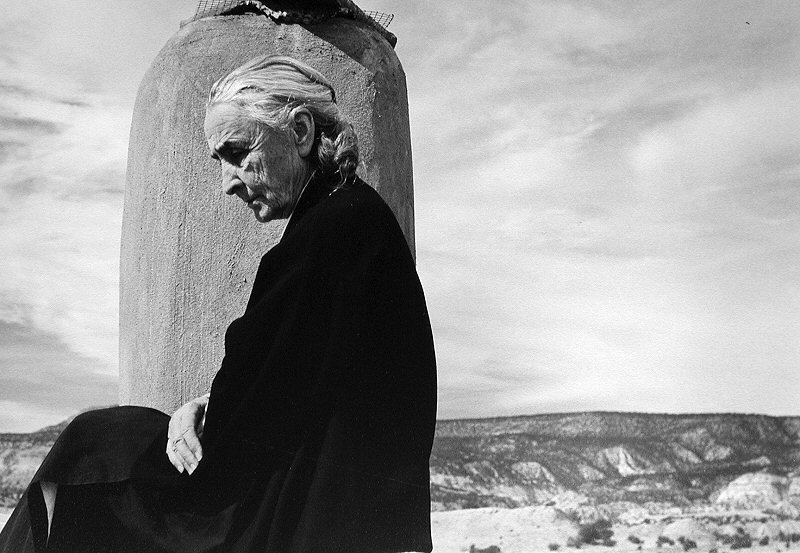
| Georgia
O'Keeffe sat on the roof of her house at Ghost Ranch. She was talking
to an editor from LIFE magazine. I grew restless listening to their
conversation and decided to try to take the most lopsided photograph in
history. I put O'Keeffe on the left of the picture, leaving nothing but
wisps of cloud and a distant hill to balance her on the right. The
first frame had faults common to pictures taken during interviews. The
shutter caught O'Keeffe's arms awkwardly as she gestured-or she focused
on someone outside the picture. You wonder who it is. Finally, though,
O'Keeffe seemed at rest, drawn into herself. Actually, her body is not
relaxed. She's coiled, ready to gesticulate. From As I See It |
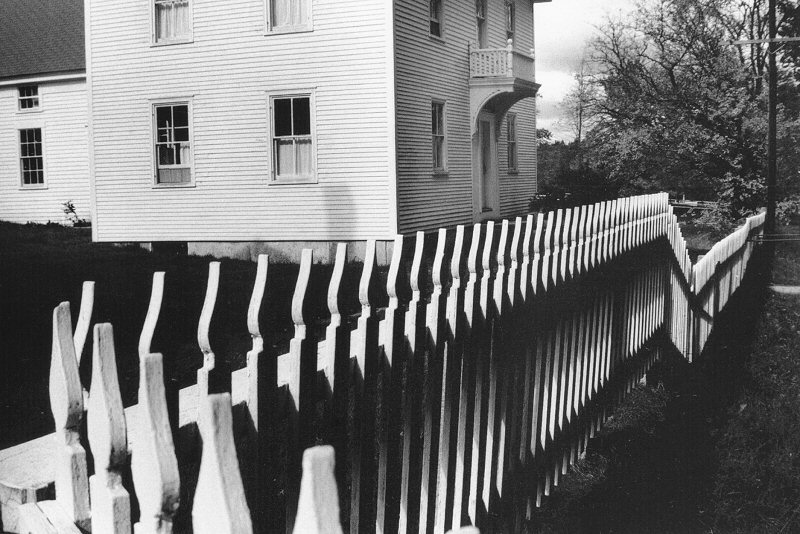
| Thomas
Merton, a Trappist monk, wrote, "The peculiar grace of a Shaker chair
is due to the fact that it was made by someone capable of believing an
angel might come and sit on it." That's all very well, and I was on my
best behavior the first day I visited the Shaker community at
Sabbathday Lake, Maine. I was polite, sympathetic and curious. But
after lunch I went out looking for action. Sunlight on the picket fence
across the street was as real as a fistfight. From As I See It |
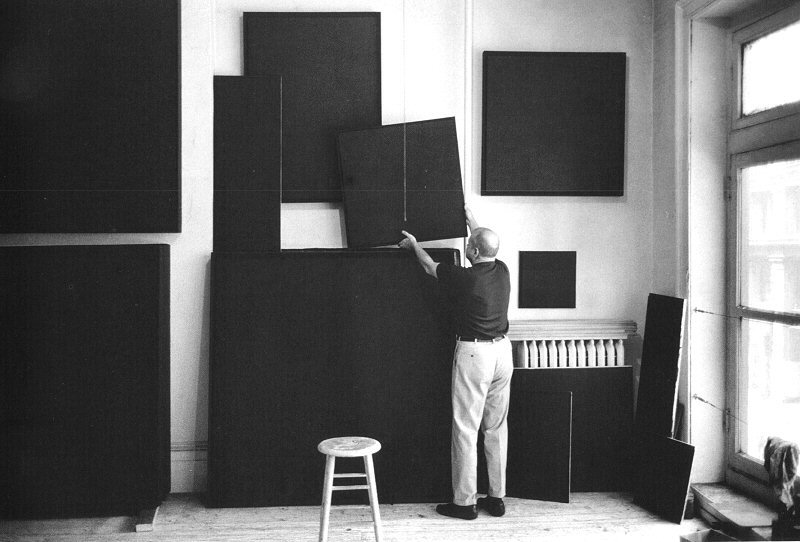
| What
Ad Reinhardt did was quite wonderful. The subtly different, near black
geometric shapes in his paintings came back from a show in Los Angeles
scuffed. So he just repainted them and hung them up to dry. From As I See It |
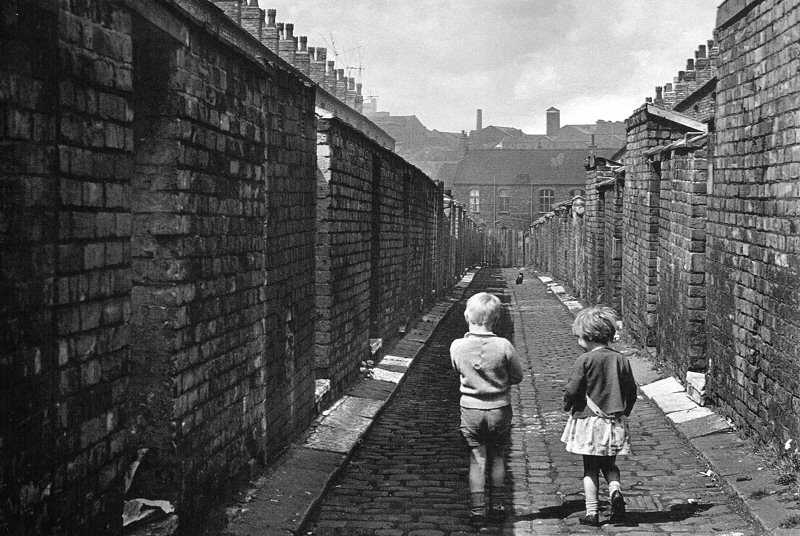
| I
don't remember taking this picture, which means I did not think it was
very good when I took it. I judge a picture only as I hear the shutter
trip. It's either "Unh-unh" or it's "Whooppee!!"-some of the latter may
actually turn out well. I don't suppose hunters remember their misses
and writers certainly don't try to remember every bad phrase that comes
to mind. At the time I must have thought the scene was too pat, but
what I did not notice was the bit of awkward tension between the
children's figures as they walked down this alley. From Pictures Under Discussion |
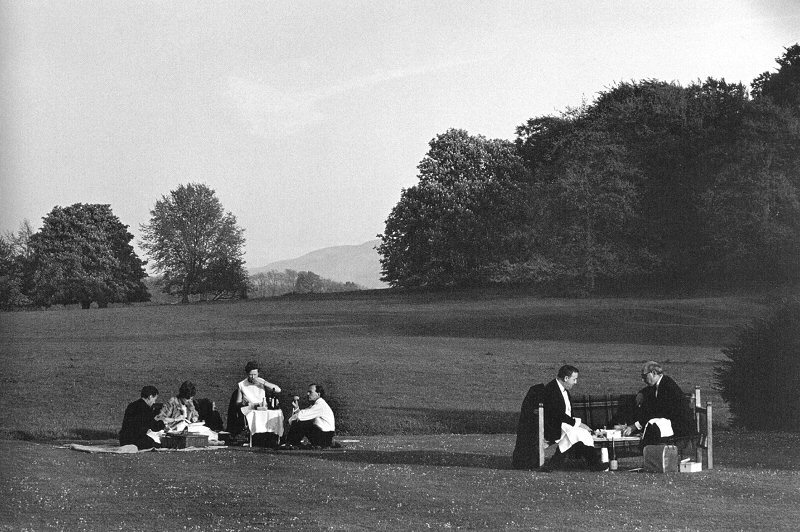
| During
supper intermission at the Glyndebourne Opera, members of the audience
often picnic on the lawn. I was pleased I made so horizontal a
composition work, but it's the juxtaposition of evening dress with the
rustic setting that's important. It's reality, not composition, that is
startling. But what reality? The sky is not blue. The grass is not
green. Nothing moves. And yet, the photograph is an accurate record of
the scene. That's an accurate inaccuracy-a paradox-and a bit of a
mystery. From As I See It |
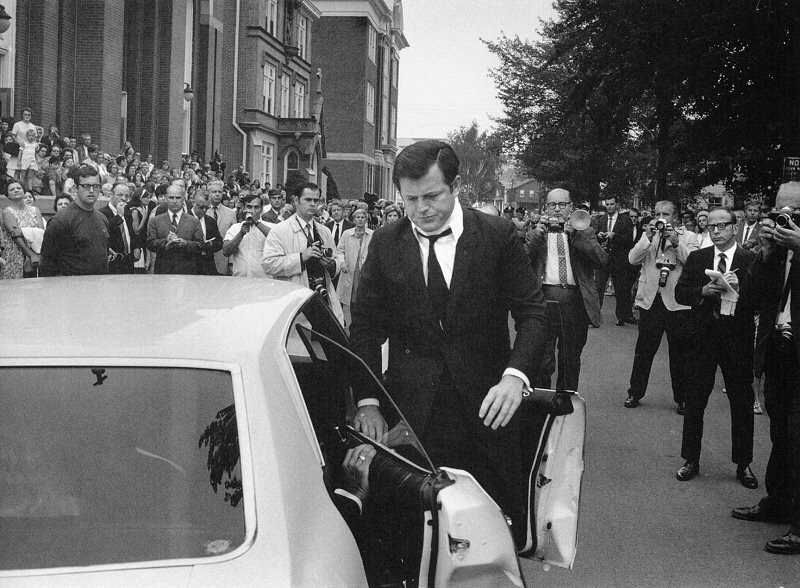
| Edward
Kennedy, 37-year-old senator from Massachusetts, was heir apparent to
the presidency. I photographed him throughout May and June in 1969. The
pictures were about to go to press on July 19, when Kennedy drove his
car off the bridge between Chappaquiddick and Martha's Vineyard
islands. Mary Jo Kopechne, in the back seat, drowned. The senator
waited eight hours to report the accident; then went into seclusion.
Everyone had questions. Kennedy would not appear in public until
Kopechne’s funeral in Pennsylvania, three days later. The occasion was
different from earlier public events I'd attended with Senator Kennedy.
It was big news. There was competition. We all tried to guess the best
place to be standing when he arrived. My guess? Kennedy's press
secretary told me the Senator would ride beside the driver in the car,
as usual. I chose to be on Kennedy's side as he arrived at the church.
Depite his neck brace, he leapt from the car and quickly turned to help
his wife and others exit from the back. The moment was a taut footnote
to the political history of the United States. From As I See It |

| Philip
Pearlstein paints in color, so why photograph him in black and white?
Well, what would color add? It would show the color of the walls. The
colors of the paint splattered on the floor. The color of his shirt.
The color of her hair. That additional information would make it harder
to notice that his arms mimic her legs and that this photograph is
about the relationship of things: a painter to his model, a model to a
room, a painter to his work. From As I See It |

| George
Nakashima made chairs, tables and cabinets from boards he bought all
over the world. Before we met, I had not known that people bid for
slices of rare trees cut down anywhere in the world. Nakashima showed
me pieces he stored in his warehouse. It was a time of Zen, flower
power and Woodstock, and I wanted to indicate that the craft of this
craftsman was not predictable. It involved both exquisite selection and
the use of a buzz saw. From As I See It |
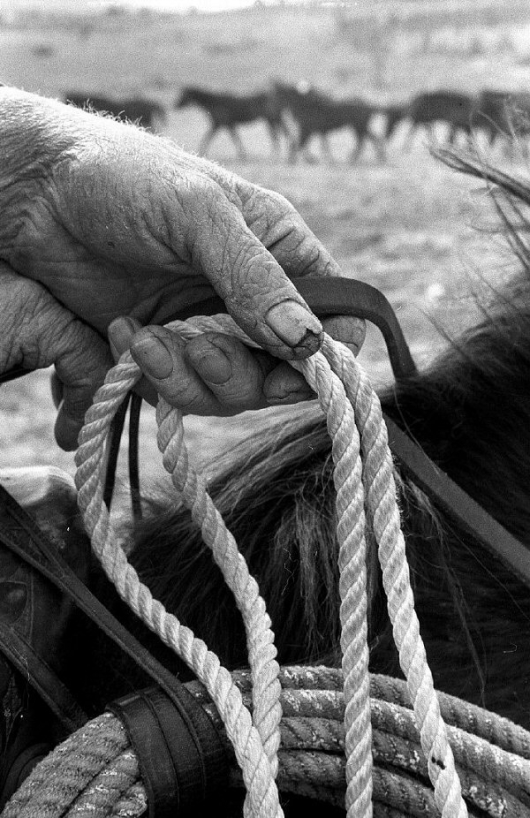
| Photographs
do not generalize. A picture of a locomotive does not explain the
industrial revolution. Still, a part of something in a photograph, can
suggest the whole. The thumbnail may characterize the person. From As I See It |
